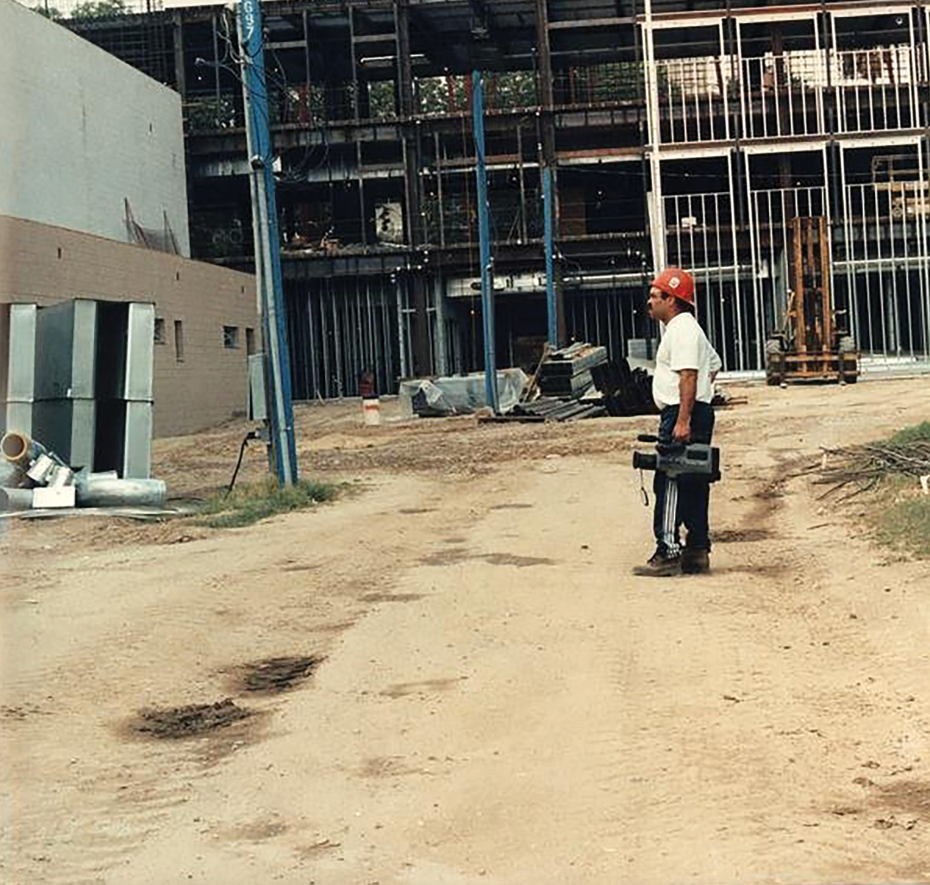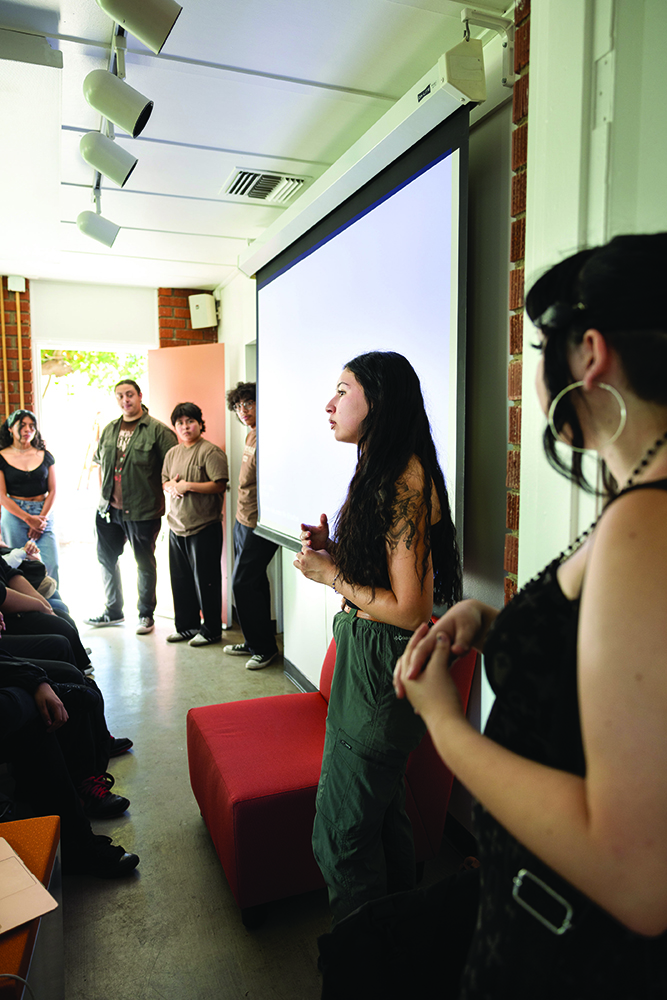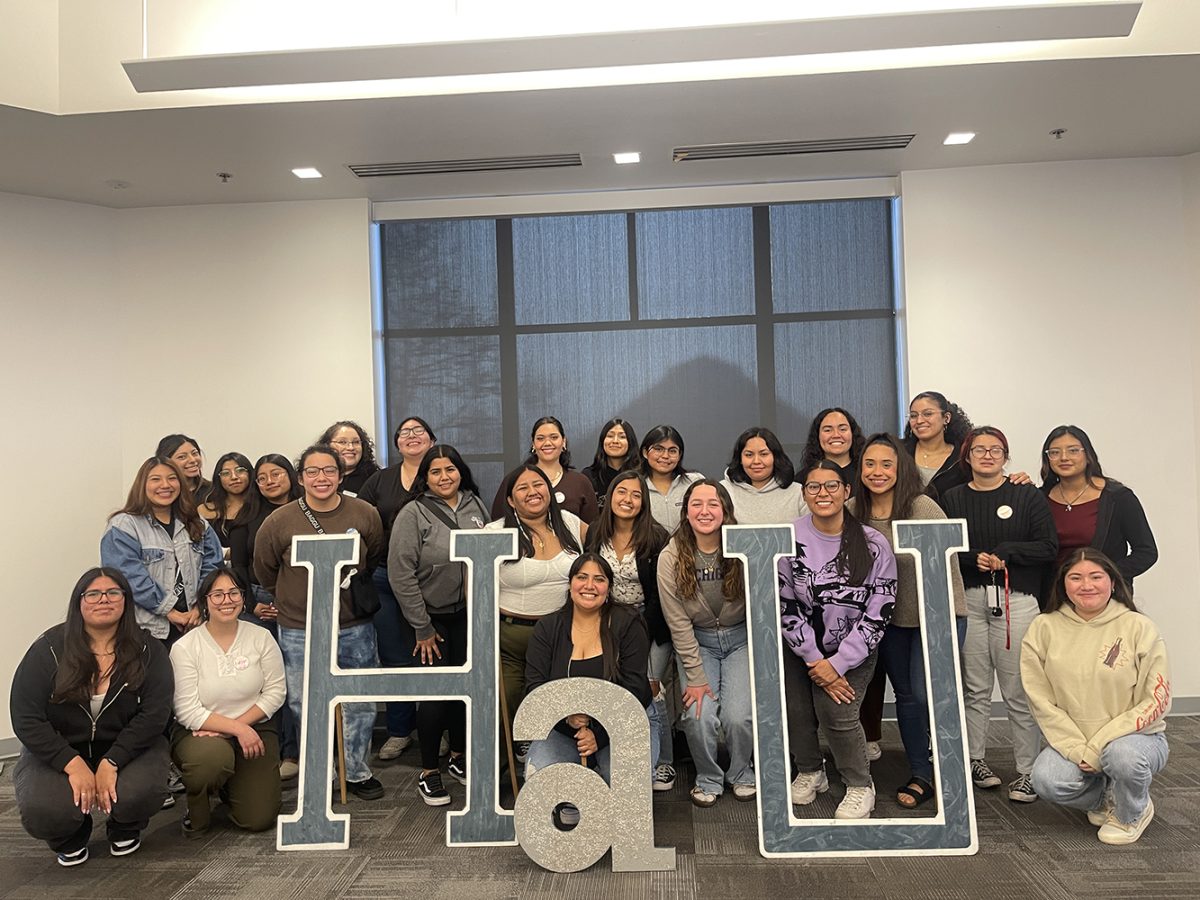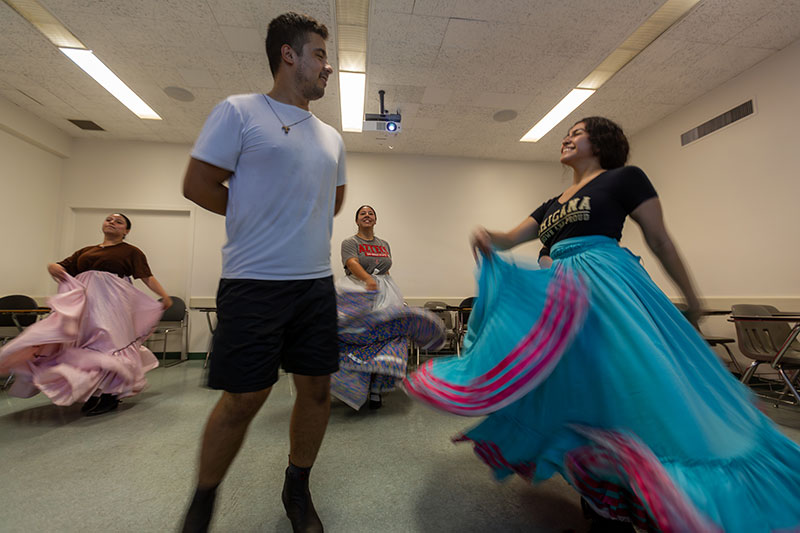George Johnson is no stranger to earthquakes. He grew up all over the San Fernando Valley, moving from West Hills to Northridge to Mission Hills and back to Northridge again. Like one big seismic wave, his life became intertwined with the Northridge earthquake.
Johnson studied television and film production at California State University, Northridge. He graduated in 1984 and landed a job partially funded by the Federal Emergency Management Agency as a videographer soon after.
He considers himself homegrown, so returning to his Matador roots was a welcomed change. “Call it fate or whatever – it took an earthquake to bring me back and keep me here.”
Things aligned for Johnson in 1994, when a 6.7 magnitude earthquake hit Northridge. Like many areas in the San Fernando Valley, CSUN’s infrastructure was completely damaged.
Cracked sidewalks and broken-down buildings made the campus look like a war zone. “It was horrible what the quake did, and I wanted to prove what I was seeing,” Johnson said.
Working as a contractor allowed Johnson to offer his services in capturing footage of the damages. “I was just an outside contractor. My previous employment contract was up, and the [cinema and television arts] department was advertising my current job. I applied and got it,” he explained.
As an equipment technician, Johnson has been digitizing earthquake footage for CSUN. “I was the only person from my department here. And one of the things that I did was scan all the earthquake pictures that were taken here, and then I donated the original pictures to the library archives.”
Prior to the earthquake, CSUN’s physical landscape consisted of more grass and trees. That isn’t the case anymore. “There are more buildings. And I think that is because of the growth. There are so many more students here now, and they need a place to have a classroom or a place to learn, but some of the original landscaping is still on campus,” Johnson said.
Rebuilding CSUN was not an easy task. According to Johnson, it took upwards of 10 years to get the campus fully functioning. Present-day Manzanita Hall was among the buildings torn down around 1996.
“FEMA has a rule that if there’s a building that’s lost, they have to tear down and replace the physical building or something close to it. But it took quite a few years before they got the campus back to the way it is today,” Johnson explained.
Digitized earthquake footage has been sectioned into four phases. The first phase consists of physical damages of all the buildings, particularly inventory.
“Videographers would go into somebody’s office, maybe their VCR was on the floor, the computers. So they made sure to capture that,” Johnson said.
The first phase of the footage also consisted of handy work. When it came to restoring electricity, CSUN brought in structural inspectors and maintenance people who specialized in electrical.
“If they were coming in this room, in the electrical tradition, the structural inspector would be walking around and looking at loose wires. The carpenter would see some ceiling tiles down, and someone else would say there is a piece of an air conditioning hose hanging out. Each expert in their field would talk about what they saw that needed to be fixed,” Johnson explained.
The second phase also included inventory footage. The third phase is perhaps the largest, consisting of 260 tapes. “Phase three is basically reconstruction.”
The reconstruction is followed by phase four, which is the end of reconstruction and the general day-to-day canvas of campus. Phase four has around 200 tapes.
“Since August, I have digitized all of phase one. I started two, but it was really boring. So I stopped phase two, and moved directly into phase three, which is what I’m working on now.”
Johnson has range with his craft; he normally gets through a minimum of four tapes or a maximum of 10 tapes done in a day.
“There was never any documentation like that done for the school. Now that we are doing the earthquake stuff, now is a good time to get that done for prosperity,” Johnson said.
Most of the footage is not so glamorous. All accidents were required to be documented. “I was just looking at a tape the other day where a guy was working in an electrical room, and he got shocked. So sometimes there were accidents, and we had to record stuff like that,” Johnson said.
Nonetheless, Johnson believes some good came from the earthquake. “I would say the buildings needed to be better, and now they are stronger.”
After the earthquake, administrators needed to revamp the campus’s west side. Manzanita Hall and the newly-built Maple Hall did not exist. “Manzanita Hall was not the original building on this lot. There used to be a library that was at one end of the lot and a fine arts building that took up the rest of it,” Johnson explained.
The creation of Manzanita Hall, which houses the Mike Curb College of Arts, Media, and Communications, led to a revitalization of its programs. “Journalism got a nice studio, CTVA and [communication] studies got rooms they never had before.”
Johnson is looking forward to completing his digitizing project, but the project has also enabled him to reflect on how the earthquake helped the campus evolve.
“I think the infrastructure is better. There are a lot of places with Wi-Fi connected to the building on the outside, so students can use their devices all across the campus. So the earthquake benefited us ultimately,” Johnson said.
Editor’s Note: A few corrections about Mr. Johnson’s previous employment were made to the online version of this story. We previously stated in the Northridge Earthquake issue of our magazine that Johnson worked for FEMA. We have corrected it to say he was an outside contractor.




